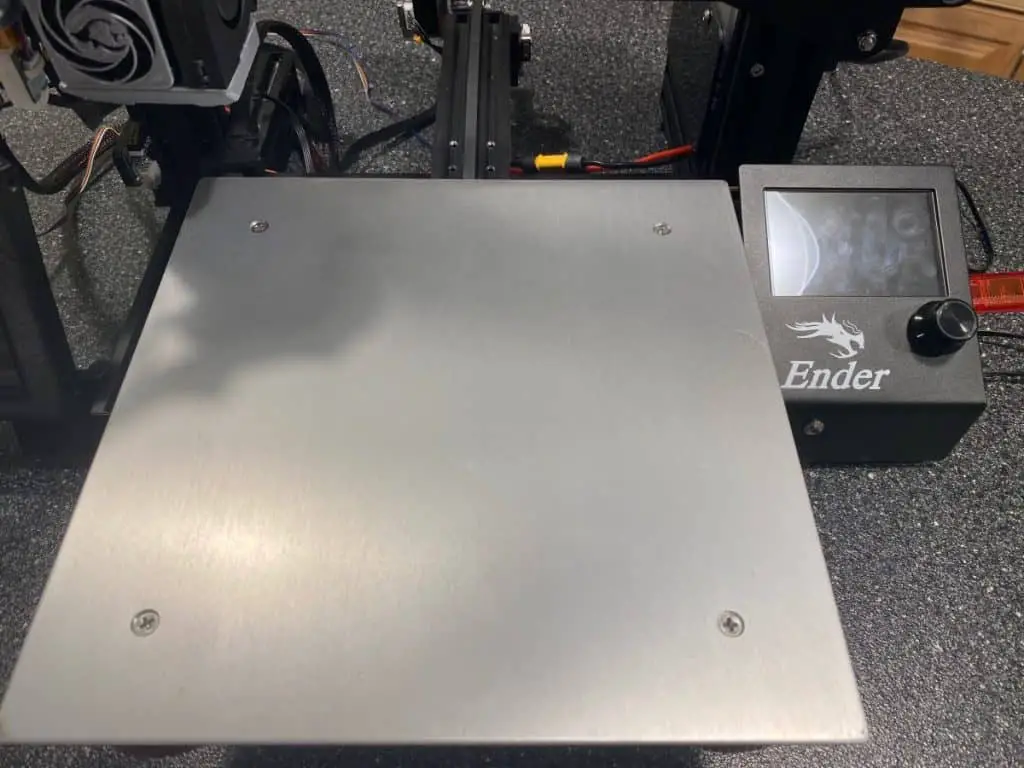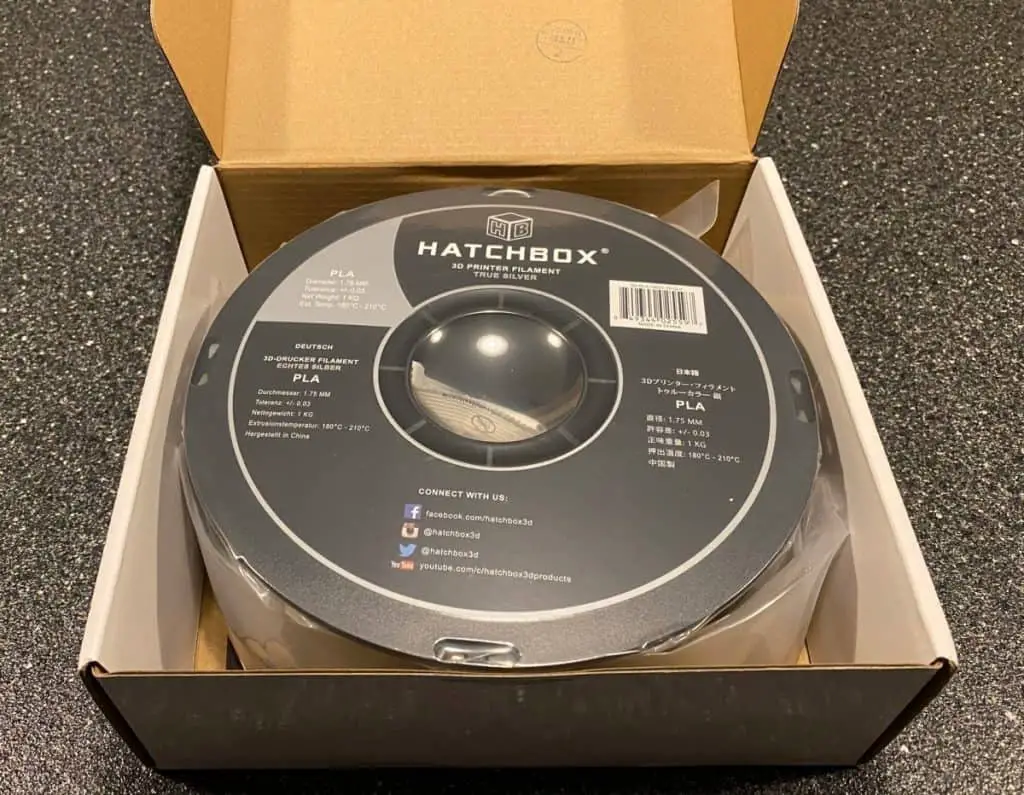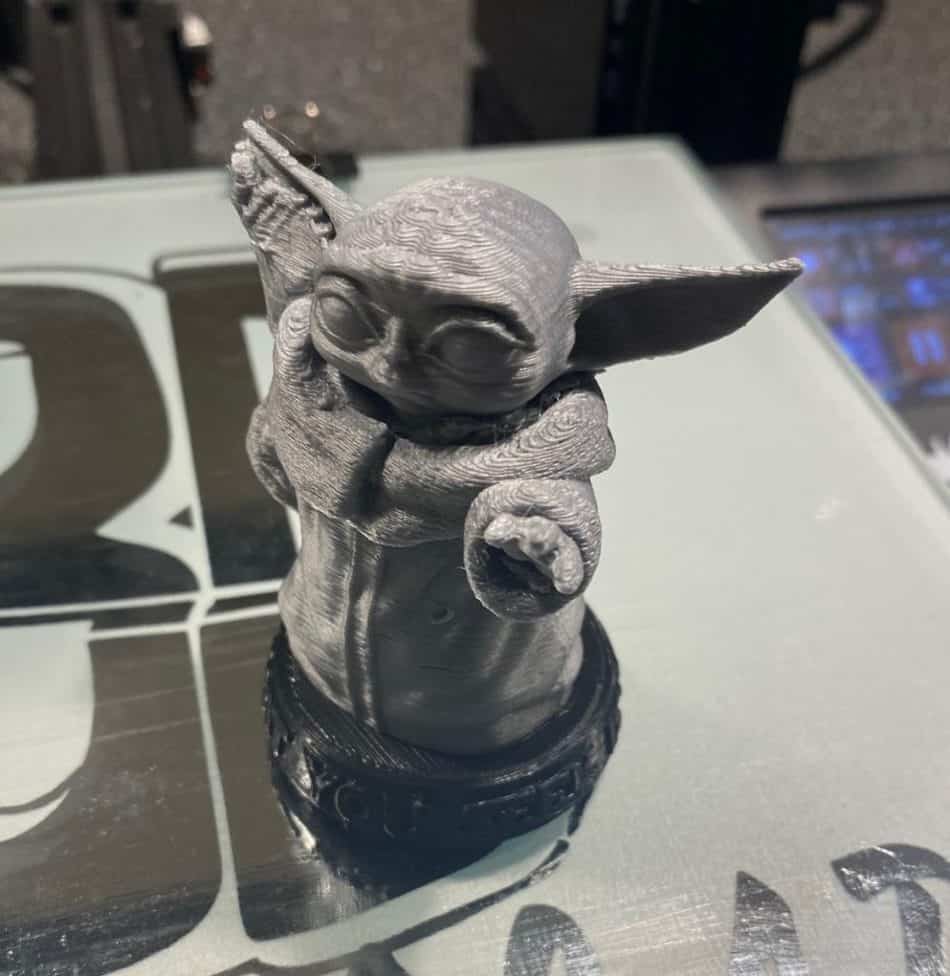I’ve been looking into replacing the bed on my 3d printer and was interested in what my different options are. The underside of my current build plate is aluminum, so I was curious about whether I can 3d print onto it. I looked around at some advice from people who have done it and here’s what I found.
Generally, you can print on an aluminum bed much like you can on a glass build plate. However, the aluminum should be thicker than 3mm as anything thinner than that is prone to curving up at the sides.
Certain filaments will stick well to aluminum, however, others won’t. Below, I will explain whether you need to do any preparation before printing onto aluminum, as well as, whether it’s a good type of build plate to use.

Can you print directly on aluminum?
Before printing on aluminum it’s important to know whether you need to do anything before beginning to print.
As a whole, you can print directly onto aluminum. PLA filament will adhere to aluminum, however, with ABS you need to use an adhesive such as hair spray or a glue stick. If your aluminum build plate is quite thin consider using tape or a PEI.
As you may know, a PEI is a synthetic material that provides a barrier between the hot filament and the aluminum. When the aluminum gets too hot it can begin to warp and curl up at the sides.
That will change the shape of the base of your print, and your print won’t be exactly right, or you can lose adhesion to the plate. This typically occurs with aluminum plates that are 3mm or thinner in thickness. Thicker aluminum by contrast is more rigid and requires more heat to make it buckle.

Does PLA stick to aluminum?
PLA is a very popular low-cost filament ideal for prototyping and printing personal prints. But, will it adhere to aluminum?
PLA will adhere to aluminum. ABS on the other hand will require glue from a glue stick or hairspray. The reason is that ABS doesn’t stick well to aluminum, but when you use a layer of glue or hair spray it works perfectly.
Glass also has the same problem as aluminum and certain filaments can have a tough time sticking to them without the use of glue or hairspray.

How do you print on aluminum?
So, it’s definitely possible to print on aluminum and it works really well, but how do you actually do it? Here’s what you need to do.
To start, ensure the aluminum build plate is flat and level. Once it’s flat and level apply a layer of either glue from a glue stick or hairspray. After that begin printing as you normally would.
To level the aluminum bed it’s best to follow the instructions for your specific 3d printer. They can be found in the instructions but it’s typically easiest to find them on their official website by doing a search.
The aluminum can get quite hot as the filament is poured onto it, so be careful not to accidentally rest your hand on it while removing the print.
Should I get a glass bed for my 3D printer?
A 3d printer can come standard with a few different beds. For example, it can have glass, aluminum, or one of these with an additional layer of PEI. But, is glass the best bed for 3d printing?
Generally, glass and metal perform the same as a bed for 3d printing. However, aluminum can be susceptible to warping. All things considered, glass is superior because it does not warp.
If the aluminum plate is thick enough it will not warp. This is generally a thickness of over 3 mm. Some people prefer to use a PEI cover on a glass bed as it allows for better adhesion. While others use an inexpensive glue stick or can of hairspray.
A build plate or 3d printer bed is one of those parts of a 3d printer that lasts for pretty much its entire lifespan. Certain electrical components within your 3d printer can need to be replaced. But, most 3d printers will have a 1-year warranty.
If you’re interested in a breakdown of how long an average 3d printer will last, and how much it costs to maintain it, click here, what’s the lifespan of a 3d printer.

Can you print directly on a glass bed?
A glass bed is popular as the build plate for 3d printing. However, is there anything special I need to do before printing directly on a glass bed?
You can print directly on a glass bed. But, it’s common for the filament to not adhere to the glass. Therefore, PEI, a glue stick, or hair spray is commonly used to allow the filament to stick to a glass build plate.
PEI works in the same way as a screen protector for a smartphone such as an iPhone. It provides a protective layer over the top of the glass build plate. But, it’s made from a material that improves adhesion.
Therefore, you don’t need to use a glue stick or hair spray if you have a PEI layer on top of your glass build plate.
But, if you are printing directly onto a glass bed then it’s a good idea to apply a layer of glue using a common glue stick that you can find at a stationery store. Or, some hairspray that you can find at the grocery store.
The quality of the glue stick or the hairspray doesn’t matter because of how we’re using them.
What bed is the best for 3d printing
The final verdict is that either glass or aluminum works well as a build plate for 3d printing and you’ll be satisfied regardless of which one you use.
However, if I had to choose between either I would choose glass, simply because it does not warp. It’s a good idea to try both, and you may find you like the way your 3d printer looks when it has a glass plate or a metal plate.
Related Articles
- Can You 3D Print on a Metal Bed?
- Best 3D Printer Build Plate
- How to Get Your Print to Stick to the Build Plate
- All About 3D Printer Plastic
- How to Print a File from Thingiverse (The Easy Way!)
- Create a Temperature Tower Using Cura – The Easy Way
- Cura Profiles
Make sure you check out our YouTube channel, and if you would like any additional details or have any questions, please leave a comment below or join us on Discord. If you liked this article and want to read others click here.
